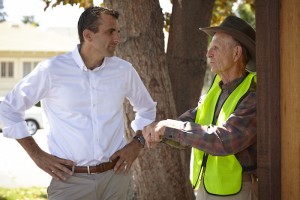San José Doesn’t Need to Spend More Money to be Safer
 With the San Jose City Council declining to place a tax measure on November’s ballot, we face the task of restoring police and other critical services within our existing level of revenues.
With the San Jose City Council declining to place a tax measure on November’s ballot, we face the task of restoring police and other critical services within our existing level of revenues.
Fortunately, we have the means to do so. With the enactment of pension reform in 2012, the city saves some $25 million this year, increasing in future years, to improve services. We’re using this dividend to increase the pace of police hiring and to restore pay 11 percent to improve officer retention.
Working together with our police and neighborhoods, we can also employ innovative approaches to making San Jose safer within our means. My book, www.samliccardo.com/a_detailed_plan, offers many ideas for the future, but there’s much we can accomplish right now.
We can start by using existing resources more efficiently.
I’ve proposed using various resource-saving technologies from body-worn cameras, which will reduce costly excessive-force lawsuits against police, to data analytics, which can help us anticipate hot spots of property and drug crime to better deploy officers. On the heels of recent news of a hardworking SJPD sergeant who relied on a Cambrian resident’s video to crack a burglary case, my proposal to create a voluntary on-line registry of private video cameras soon comes before a council committee. Police in Philadelphia have used a similar registry in more than 200 robbery and burglary arrests.
Today, we’re beginning to hire and train civilian community service officers to take on routine tasks such as taking reports or transporting evidence so that police can focus on higher priorities. I’ve also introduced a proposal to empower city staff to address complaints about exploding fireworks with civil fines to improve deterrence of safety problems to which the police often can’t respond.
Of course, the most cost-effective ways to reduce crime lie in prevention. Employing high-risk teens in expanded summer and after-school job programs can dramatically reduce gang recruitment and violence. We could fund this through different sources, such as rising marijuana tax revenues or developer fees for park improvements, to engage youth in real work experience improving our community.
My mayoral opponent has claimed that rather than innovating to make San Jose safer, we should overturn Measure B. The reasoning goes that this 2012 pension reform measure approved by 70 percent of voters caused crime to increase in San Jose by scaring away police officers. Yet there’s no factual connection between pension reform and crime rates.
The FBI reports that major felonies actually dropped 10 percent in San Jose the year after Measure B passed, and homicides and property crimes have continued dropping since.
What of Measure B’s impact on the police force? The number of sworn officers dropped from 1,065 to 1,023 in the two years since its implementation, a net loss of 42 officers, as new hires offset some who left. But compare that to what occurred in the four years prior to Measure B’s passage: a net loss of 323 officers.
Simply put, the SJPD shrank because we ran out of money. We were spending $200 million more a year on retirement benefits than a decade before, forcing cuts everywhere else. Anyone who suggests we should overturn Measure B to improve safety had better identify a way to pay for those retirement costs — and for police salaries.
Fortunately, we don’t need to spend more to be safer. We can spend smarter. Working together, we can craft America’s most innovative, cost-effective approach to public safety to the benefit of every San Jose neighborhood.
Sam Liccardo represents downtown District 3 on the San Jose City Council and is running for mayor. He wrote this for this newspaper.
